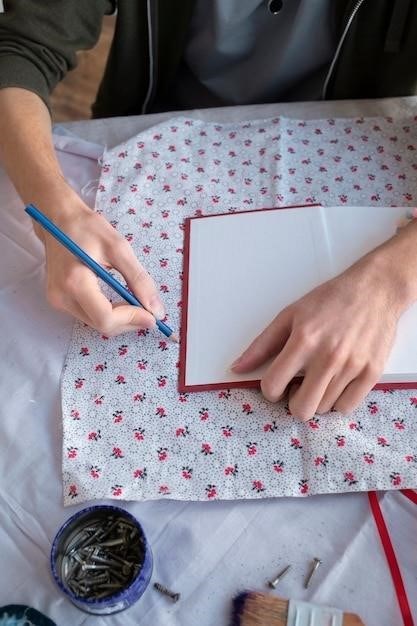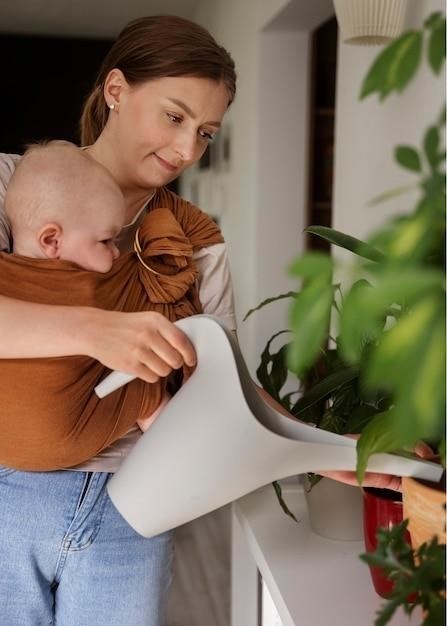Moby Wrap Tutorial⁚ A Comprehensive Guide
Welcome to your comprehensive guide on using a Moby Wrap, a versatile and comfortable baby carrier. This tutorial will cover everything from choosing the right wrap to mastering different holds and troubleshooting common issues. Whether you’re a first-time parent or an experienced babywearer, this guide will equip you with the knowledge and confidence to safely and comfortably carry your little one.
Introduction
The Moby Wrap is a popular and versatile baby carrier that allows for close bonding and hands-free convenience. This wrap, made from soft, stretchy fabric, provides a secure and comfortable fit for both baby and wearer. It’s designed to mimic the feeling of being held, promoting a sense of security and calm for your little one. Whether you’re running errands, taking a walk, or simply relaxing at home, the Moby Wrap offers a practical and comforting solution for carrying your baby.
This tutorial is designed to be your comprehensive guide to using the Moby Wrap safely and effectively. We’ll delve into the benefits of babywearing with a Moby Wrap, explore different types of wraps and their features, and provide step-by-step instructions for wrapping your baby in a variety of positions. We’ll also address safety considerations, common troubleshooting issues, and tips for successful wrapping.
By the end of this tutorial, you’ll have the confidence to confidently and safely use the Moby Wrap to enjoy the numerous benefits of babywearing.
Benefits of Using a Moby Wrap
Choosing a Moby Wrap for babywearing comes with a range of benefits that enhance both your and your baby’s experience. This versatile carrier promotes a sense of security and comfort for your little one while providing you with the freedom and convenience of hands-free parenting. Here are some key advantages of using a Moby Wrap⁚
Firstly, the close proximity and constant physical contact provided by the Moby Wrap can soothe and calm your baby. The gentle rocking motion, similar to being held in your arms, can help to reduce fussiness and promote a sense of security. This close connection also fosters a strong bond between you and your baby, enhancing your relationship and promoting emotional well-being.
Secondly, the Moby Wrap allows for a variety of carrying positions, accommodating your baby’s growth and your personal preference. Whether you prefer a front carry, hip carry, or newborn hug hold, the Moby Wrap offers flexibility and adaptability. This versatility ensures that you can find the most comfortable and secure position for both you and your baby.
Finally, the Moby Wrap is a practical and convenient tool for busy parents. It allows for hands-free movement, enabling you to go about your daily activities while keeping your baby close. This can be particularly helpful when running errands, doing chores, or simply enjoying a walk in the park.
Choosing the Right Moby Wrap
Selecting the perfect Moby Wrap for your needs requires considering factors such as your baby’s age, weight, and your personal preferences. Moby Wrap offers a range of styles and materials, each with its unique characteristics and advantages. Here’s a guide to help you make an informed choice⁚
For newborns, the Moby Wrap Original is an excellent choice. This classic wrap is made from 100% cotton, providing a soft and breathable experience for your little one. It’s also easy to care for, as it’s machine washable and dryer safe. If you’re looking for a more lightweight option, the Moby Wrap Elements might be a good fit. This wrap is made from a blend of cotton and modal, making it incredibly soft and breathable. The Elements Wrap is also available in a variety of beautiful colors and patterns.
For older babies and toddlers, the Moby Wrap Gathered is a popular choice. This wrap is made from a thicker fabric, providing extra support and comfort for your growing child. It also features a gathered design that allows for a more adjustable fit. The Moby Wrap Gathered is available in a range of colors and patterns, making it a stylish and practical option for parents on the go.
No matter which Moby Wrap you choose, make sure it’s the right size for you and your baby. Moby Wraps are available in a variety of sizes, so you can find one that fits comfortably and securely.
Safety Considerations
While Moby Wraps provide a secure and comfortable way to carry your baby, safety should always be paramount. Here are some essential safety considerations to keep in mind⁚
Firstly, it’s crucial to choose the correct size Moby Wrap for both you and your baby. A wrap that’s too large or too small can compromise safety. Make sure the wrap fits snugly around your body and provides adequate support for your baby. Secondly, always follow the manufacturer’s instructions for wrapping your baby. Moby Wrap provides detailed instructions and videos on their website, which can guide you through the process.
Next, ensure that your baby’s airway is clear and unobstructed at all times. Avoid wrapping your baby too tightly, as this can restrict their breathing. Additionally, be mindful of your baby’s position in the wrap. They should be facing you with their back straight and their chin off their chest. Lastly, avoid using a Moby Wrap while driving or engaging in activities that require both hands, such as cooking or cleaning.
Always prioritize your baby’s safety and comfort when using a Moby Wrap. If you have any doubts or concerns, consult with a healthcare professional or a certified babywearing educator.
Essential Steps for Wrapping
Mastering the art of wrapping with a Moby Wrap takes practice, but with these essential steps, you’ll be carrying your little one like a pro in no time.
First, find a comfortable, well-lit space where you can spread out the wrap and practice without interruptions. Start by laying the wrap out flat on the floor, ensuring it’s wrinkle-free. Next, identify the center of the wrap, which is often marked with a tag or seam. You’ll be starting the wrap from this center point.
Once you’ve identified the center, fold the wrap in half lengthwise, creating a long, narrow strip. Now, you’re ready to start wrapping. The key is to wrap the Moby Wrap tightly, but not too tightly, ensuring your baby’s comfort and safety. Practice makes perfect, so don’t be discouraged if it takes a few attempts to get the hang of it. Remember, there are resources available online to help you along the way.
Putting on the Wrap
Putting on the Moby Wrap is the first step in ensuring a secure and comfortable carry for your baby. It’s important to start with the wrap positioned correctly to ensure a snug and supportive fit.
Begin by standing with your feet shoulder-width apart, holding the folded wrap in front of you. The center of the wrap should be at your waistline. Take one end of the wrap and wrap it around your waist, crossing it at your back, and bringing it to the front. Repeat with the other end of the wrap, crossing it over the first wrap at your back, and bringing it to the front.
Now, you’ll have two loose ends of the wrap in front of you. Bring these ends up over your shoulders, crossing them over your back, and then back down to your waist. Ensure the fabric is evenly distributed across your back. You can now adjust the wrap for a snug fit. Remember, you want the wrap to feel secure but not constricting. With a little practice, you’ll find the perfect fit for both you and your baby.
Securing the Wrap
Once you have the wrap positioned correctly, it’s time to secure it for a safe and comfortable carry. There are a few different ways to secure the wrap, and the best method will depend on your preference and the age of your baby.
One common method is to tie the ends of the wrap into a knot at your waist. This creates a secure hold that is easy to adjust. Another option is to use a wrap-specific buckle or clip to secure the ends of the wrap. This can be particularly helpful for parents who find tying knots challenging.
Regardless of the method you choose, make sure the wrap is snug but not too tight. You should be able to comfortably fit two fingers between the wrap and your baby’s body. Remember, the goal is to create a secure and supportive hold for your little one, while allowing for their natural movement and breathing.
Adjusting the Wrap for Comfort
Once you’ve secured the wrap, it’s important to adjust it for both you and your baby’s comfort. This involves finding the right balance of tightness and looseness, ensuring a secure fit without any discomfort or restricted breathing for your little one. Start by checking for any areas where the fabric is bunching or pulling, as this can lead to discomfort for both you and your baby.
Adjust the wrap by pulling on the fabric in different areas, making sure to redistribute the weight evenly. You might need to tighten or loosen the wrap in certain areas to achieve the perfect fit. If you feel any pressure on your shoulders or back, try adjusting the height of the wrap. Remember, you should be able to comfortably fit two fingers between the wrap and your baby’s body.
Don’t hesitate to experiment with different adjustments until you find a position that feels comfortable for both you and your baby. The goal is to create a supportive and secure hold that allows for natural movement and breathing for your little one.
Positioning the Baby
Once the wrap is adjusted for comfort, it’s time to position your baby. The key is to ensure their airway remains clear and they are supported in a natural, frog-legged position, with their hips higher than their knees. This promotes healthy hip development and allows for natural movement. Start by gently placing your baby in the center of the wrap, ensuring their back is straight and their head is resting comfortably against your chest or shoulder.
Ensure their chin is not tucked into their chest, as this can restrict breathing. You might need to adjust the wrap’s height or tightness to ensure a comfortable position for your baby. Once your baby is positioned, check that the wrap is snug but not too tight, allowing for easy breathing and movement. You should be able to fit two fingers comfortably between the wrap and your baby’s body.
If you feel any pressure on your baby’s airway or discomfort in their positioning, readjust the wrap until you feel comfortable. Remember, the goal is to create a secure and supportive hold that allows your baby to feel safe and comfortable while being carried.
Common Moby Wrap Holds
The Moby Wrap offers a variety of comfortable and ergonomic holds that cater to different stages of your baby’s development and your personal preference. Here are some popular Moby Wrap holds⁚
- Newborn Hug Hold⁚ This is the ideal hold for newborns as it mimics the feeling of being held close to your body. It provides a snug and secure position for your baby, promoting a sense of comfort and security.
- Front Carry⁚ This hold is suitable for babies who are able to hold their head up independently. It allows for a close and intimate connection with your baby, while still providing a secure and comfortable position.
- Hip Carry⁚ This hold is great for older babies who are more active and want to explore their surroundings. It allows your baby to sit comfortably on your hip, while still maintaining a secure hold.
Experiment with different holds and find the one that works best for you and your baby. Each hold offers its own unique benefits, and you can switch between them as your baby grows and their needs evolve. Remember to always prioritize comfort and safety, and never hesitate to adjust the wrap or hold as needed.
Newborn Hug Hold
The Newborn Hug Hold is a gentle and secure way to carry your newborn in a Moby Wrap. This hold is recommended for babies from 8 lbs. and up and provides a close, comforting embrace similar to being held in your arms. To perform the Newborn Hug Hold, follow these steps⁚

- Wrap the Moby Wrap⁚ Start by wrapping the Moby Wrap around your waist, crossing the fabric in the front. Ensure the fabric is snug but not too tight.
- Position the Baby⁚ Place your baby in the wrap, lying on their back with their head resting on your chest. Their spine should be aligned with yours.
- Secure the Wrap⁚ Bring the fabric from the opposite side of your body over your baby’s back, and wrap it around your waist. Tighten the wrap by pulling on the fabric at the sides of your baby’s back, ensuring a snug but comfortable fit.
- Adjust for Comfort⁚ Adjust the wrap as needed to make sure your baby is comfortable and secure. Their chin should be slightly lifted, allowing for clear airways. Always make sure your baby’s face is clear of the fabric.
The Newborn Hug Hold provides a comforting and secure environment for your baby, allowing them to feel safe and secure. It’s a perfect way to promote bonding and encourage a sense of calm and contentment.
Front Carry

The Front Carry is a versatile and comfortable hold that allows you to carry your baby facing inward while keeping them close to your chest. It provides excellent support for both you and your baby, making it suitable for various activities. To perform the Front Carry, follow these steps⁚
- Prepare the Wrap⁚ Wrap the Moby Wrap around your waist, crossing the fabric in the front. Adjust the wrap to a snug but comfortable fit.
- Position the Baby⁚ Place your baby on your chest, facing inward, with their legs tucked into the wrap. Ensure their spine is straight and their head is resting comfortably against your chest.
- Secure the Wrap⁚ Bring the fabric from the opposite side of your body over your baby’s back and wrap it around your waist. Tighten the wrap by pulling on the fabric at the sides of your baby’s back, ensuring a snug but comfortable fit.
- Adjust for Comfort⁚ Adjust the wrap as needed to ensure your baby’s legs are tucked comfortably into the wrap and their head is supported. Ensure that your baby’s face is clear of the fabric and their airways are open.
The Front Carry promotes bonding and allows for easy interaction with your baby. It’s ideal for errands, walks, and other activities where you want to keep your baby close and secure.
Hip Carry
The Hip Carry is a comfortable and ergonomic hold that allows you to carry your baby on your hip. It’s ideal for providing support to your baby’s hips and legs while keeping them close to your body. To perform the Hip Carry, follow these steps⁚
- Prepare the Wrap⁚ Wrap the Moby Wrap around your waist, crossing the fabric in the front. Adjust the wrap to a snug but comfortable fit.
- Position the Baby⁚ Place your baby on your hip, facing outward. Ensure their spine is straight and their head is resting comfortably against your shoulder.
- Secure the Wrap⁚ Bring the fabric from the opposite side of your body over your baby’s back and wrap it around your waist. Tighten the wrap by pulling on the fabric at the sides of your baby’s back, ensuring a snug but comfortable fit.
- Adjust for Comfort⁚ Adjust the wrap as needed to ensure your baby’s legs are tucked comfortably into the wrap and their head is supported. Ensure that your baby’s face is clear of the fabric and their airways are open.
The Hip Carry is a great option for activities like grocery shopping, walking, and even cooking. It provides freedom of movement for you and a secure and comfortable position for your baby.



